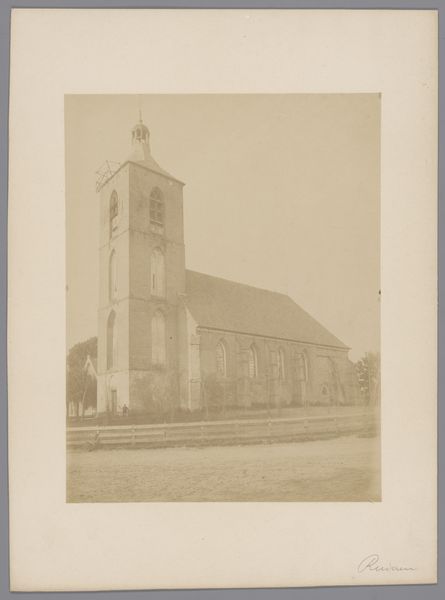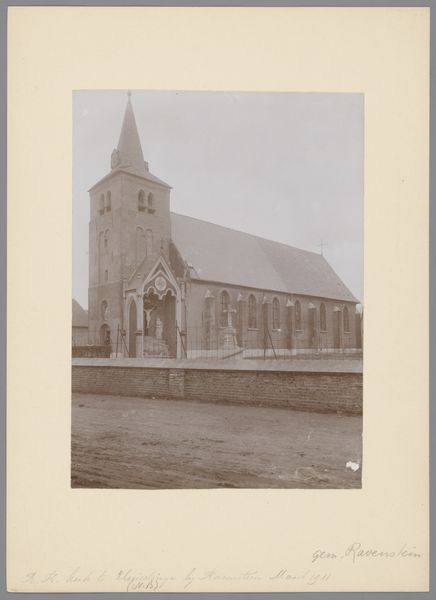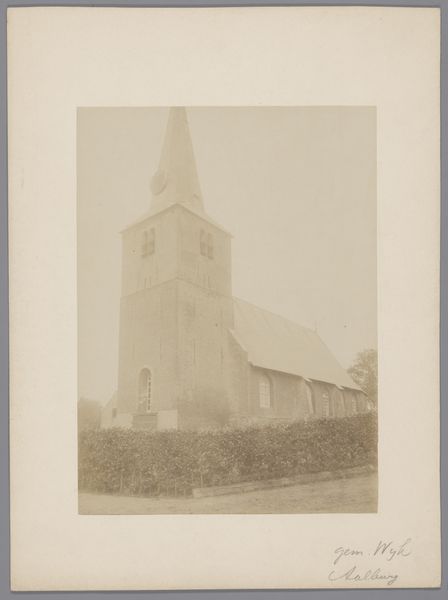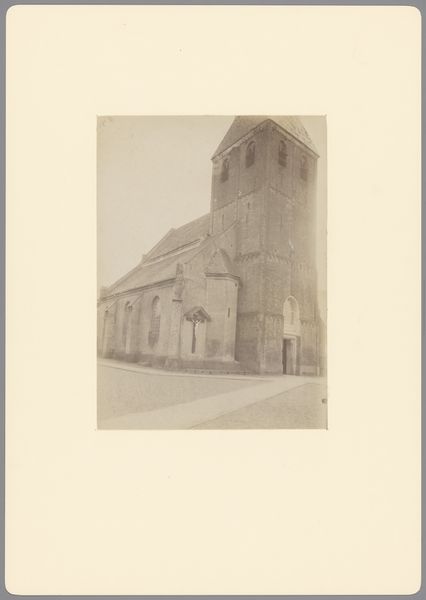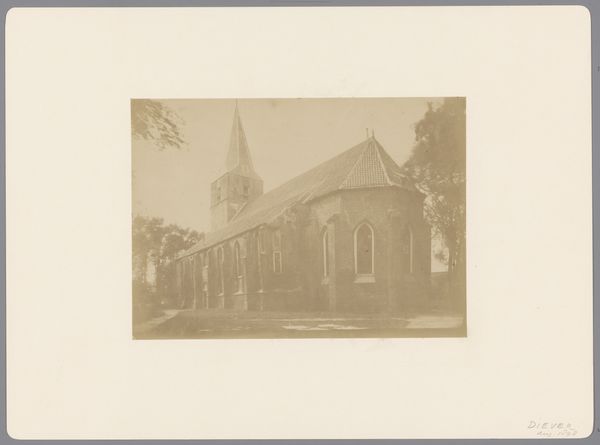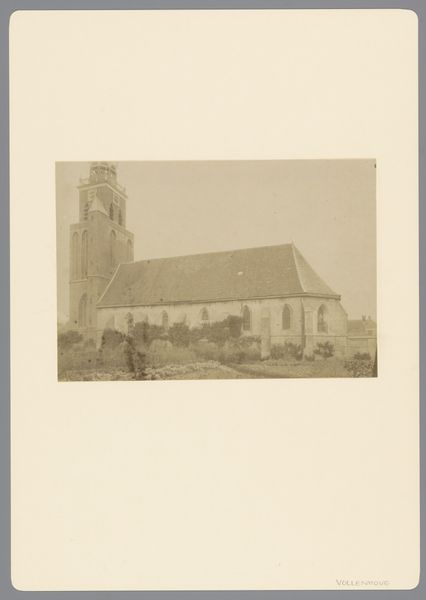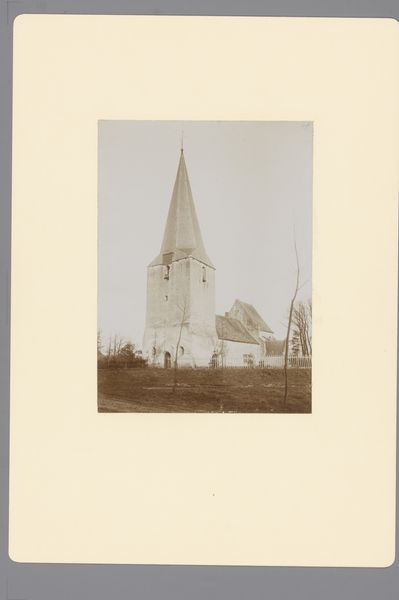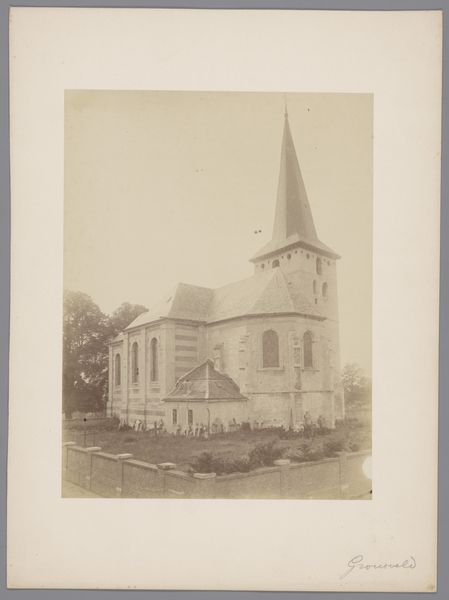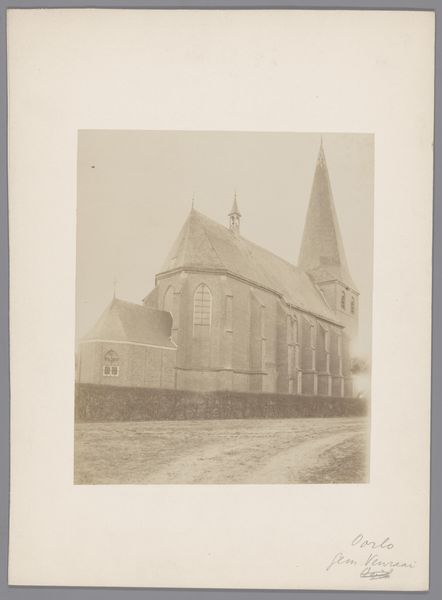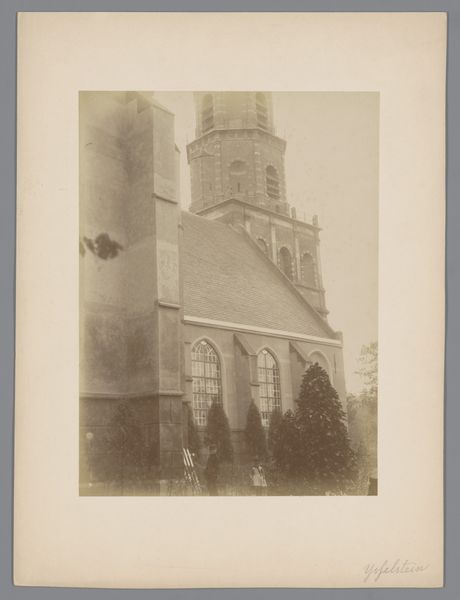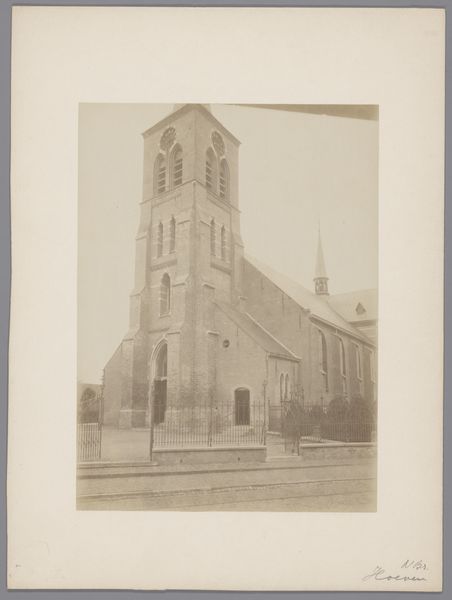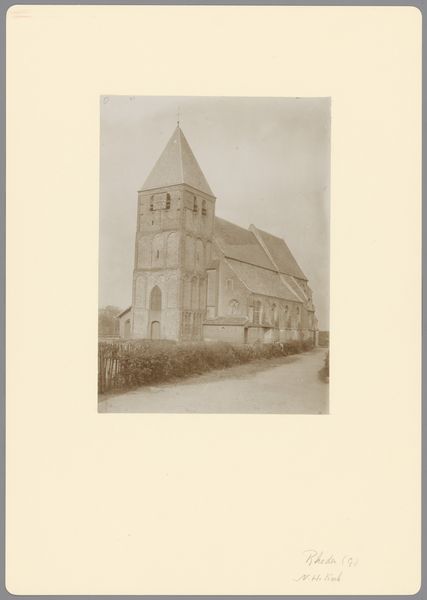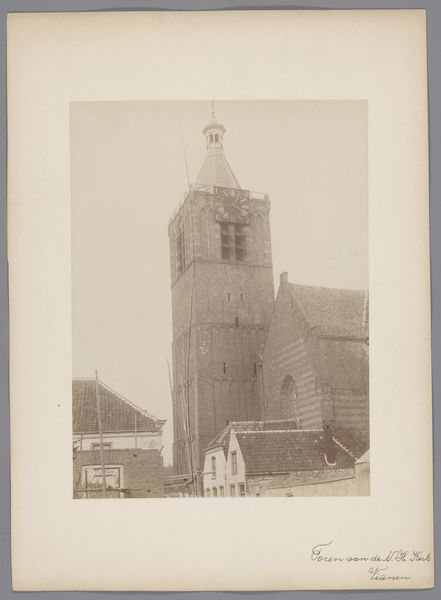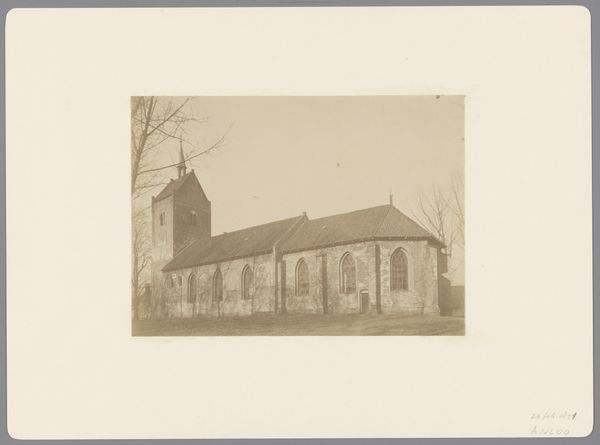
Dimensions: height 162 mm, width 229 mm
Copyright: Rijks Museum: Open Domain
Curator: I find this photograph strangely compelling in its simplicity. Editor: It certainly possesses a stillness. Sepia tones contribute to its quiet, almost mournful atmosphere. I'm struck by how solid the church looks, rendered in such a fragile medium. Curator: This photograph, entitled "Gezicht op de Gashuiskerk te Doesburg", likely created between 1890 and 1920, provides a glimpse into the architectural and social fabric of the Netherlands. The church is so deliberately framed within its streetscape, its presence and social impact felt on both its congregants and surrounding homes. Editor: Note how the soft light almost dissolves the boundaries of the brick and mortar—you barely sense the materiality, beyond the most general of impressions! It does suggest a consideration of the photograph itself as a constructed object. Curator: Precisely. And consider the context. Churches often held considerable social and political power. I would want to understand this particular church’s role within Doesburg, both in terms of its religious function and its position within the local power structure, during the specific historical timeframe in which this photograph was produced. Editor: We can’t discount that photography had very clear associations to truth in documentation during its rise as a visual language, and thus played into narratives of authority and state. What kind of access would be needed to take an image of a place or community that belongs to others? What narratives are uplifted or lost? Curator: Absolutely. And let's not forget the production of photographs themselves: the chemicals, the paper, the labour involved in creating a seemingly simple image like this. What kind of economic system enables it, and what meanings about labor are reflected here? It seems simple, but as usual there is plenty more hidden in plain sight! Editor: A poignant reminder to look beyond the surface. Curator: Indeed. This little church photograph serves as a potent reminder that every image tells a story and prompts crucial social and political reflection if you really pause to engage.
Comments
No comments
Be the first to comment and join the conversation on the ultimate creative platform.
